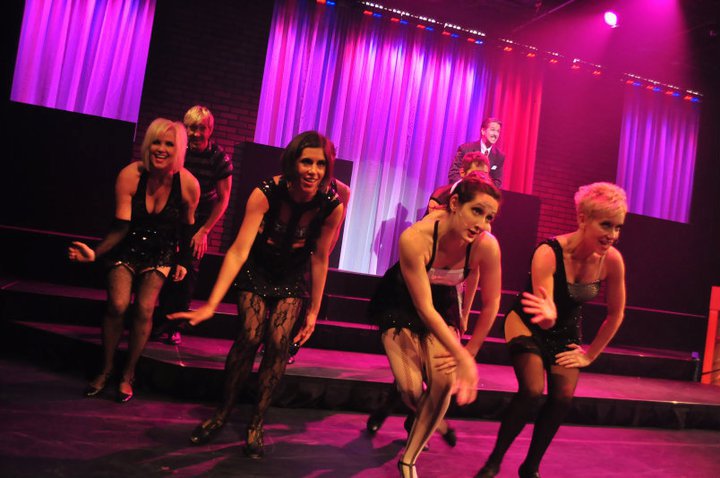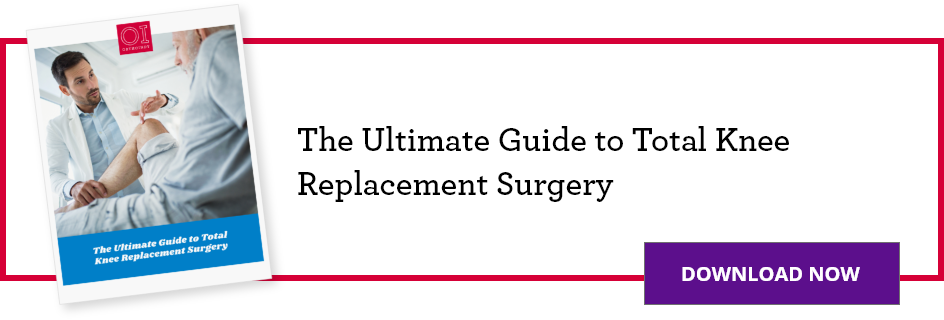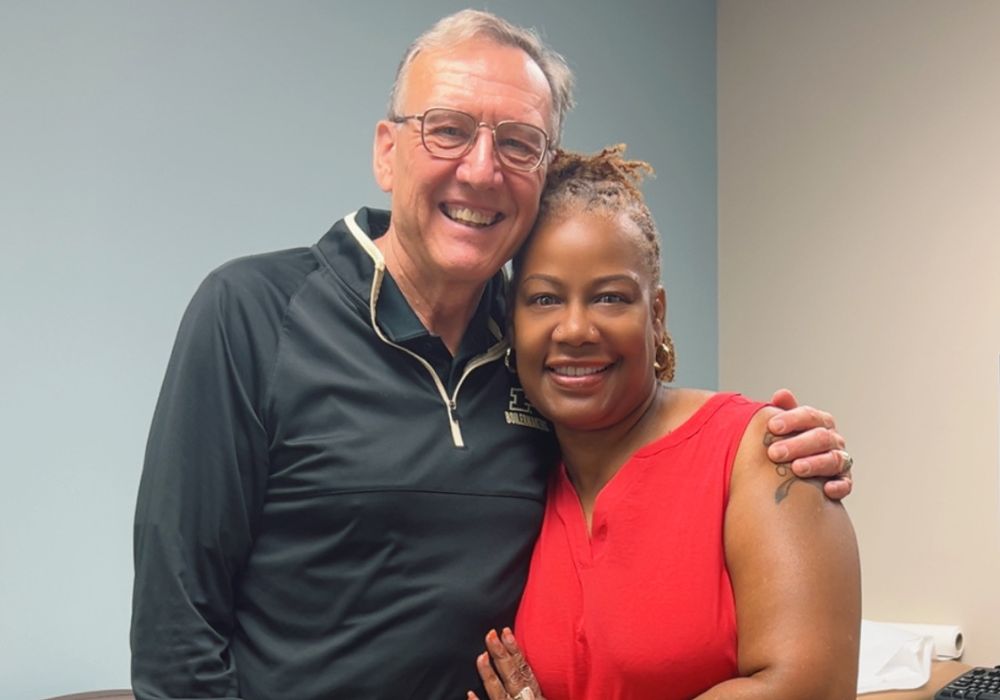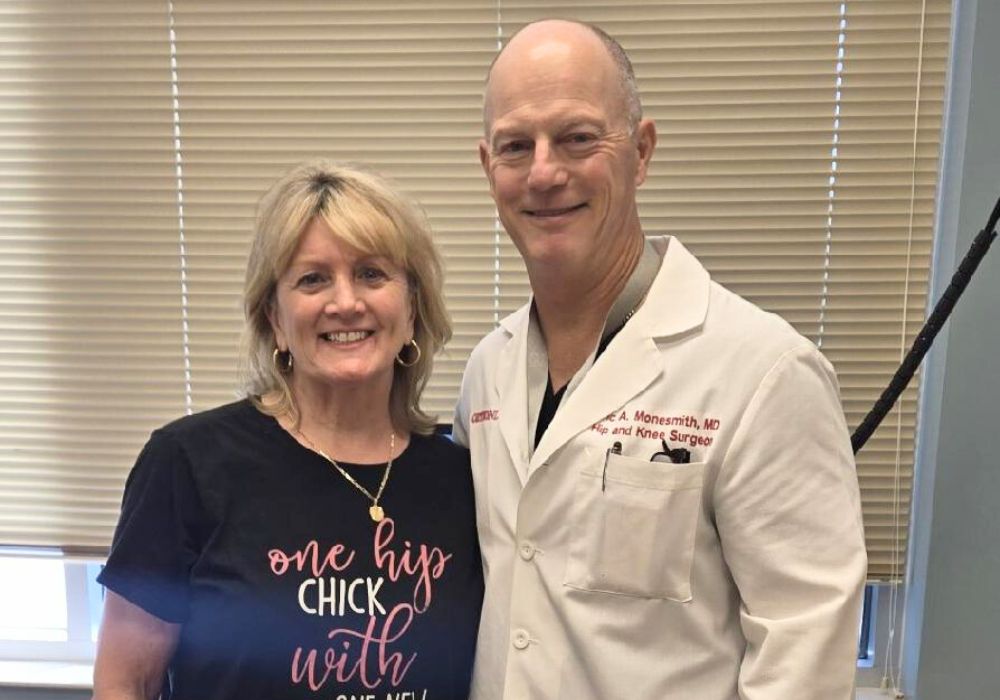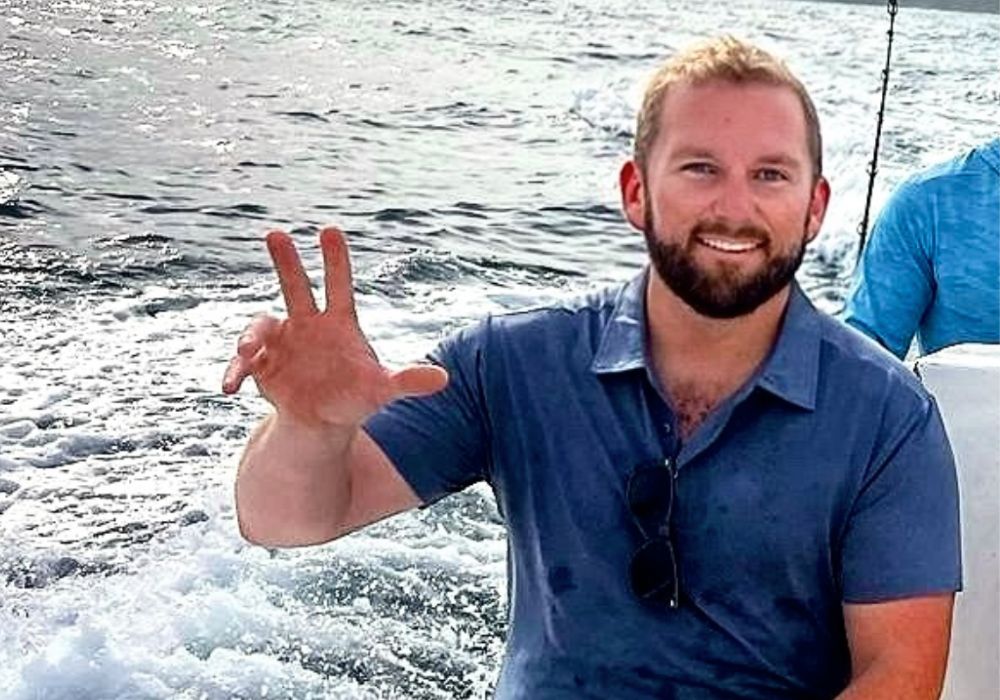THIS POST IS PART OF THE ULTIMATE GUIDE TO TOTAL KNEE REPLACEMENT
Jennifer Shoup is no stranger to OrthoIndy. Her first encounter with OrthoIndy was more than 18 years ago when she was a Pacemate for the Indiana Pacers. At the time, she was experiencing pain in her left knee and ended up having a knee scope so she could continue dancing. However, she knew it wasn’t going to be the last time she visited OrthoIndy.
“At that point it was fairly clear that, eventually, I was probably going to have that knee replaced,” said Jennifer.
The knee pain didn’t stop Jennifer from doing what she loved, she continued to dance and workout regularly. Even when the pain flared and her knee swelled during the run of a show in which she was performing, she refused to let it hold her back.
The diagnosis-total knee replacement surgery
But in 2015 Jennifer couldn’t take it anymore and she came in to see Dr. Sanford Kunkel, a sports medicine specialist at OrthoIndy. He determined she needed a total knee replacement and referred her to one of his OrthoIndy partners.
Eventually, she scheduled surgery with Dr. Christopher Pomeroy, OrthoIndy total joint specialist.
Unfortunately, a week before her scheduled surgery, Jennifer tore her meniscus in her right knee. She opted to have her right knee scoped and left knee replaced at the same time.
After surgery, Jennifer was determined to get as much flexibility back into her knees as possible so she could return to dancing. In time, she met her goal.
“I can do almost everything dance-wise that I could before surgery,” said Jennifer. “I have all of my strength back in my knee too.”
However, Jennifer’s knee pain journey wasn’t over yet. In 2017, she tore her meniscus in her right knee again.
“I knew it meant that I was now likely headed down the road to replace my right knee too,” said Jennifer. “When I talked to Dr. Pomeroy about options, he said we could be conservative and do a knee scope or even do nothing and see what happened. I didn’t really want to be conservative and deal with a protracted decline, so, even though it wasn’t causing significant pain, I chose to go ahead and have it replaced.”
A total knee replacement is always up to the patient. A patient may choose to have their knee replaced when the pain and function of their knee is not allowing them to have a great quality of life and non-surgical treatments are no longer helping.
Total knee replacement recovery
Once again Jennifer underwent knee replacement surgery, this time on another knee and would need to work just as hard to get back to dancing.
“Typically after a knee replacement surgery, I focus on pain and swelling control with guided physical therapy in the first few weeks after surgery,” said Dr. Pomeroy. “As these improve, patients see results regarding their range of motion and strength. With a properly balanced total knee replacement and guided physical therapy, patients should improve strength, range of motion and their quality of life. Jennifer is a prime example of all of these goals being achieved simultaneously.”
Resumption of normal activities after joint replacement is highly dependent on the individual patient. You should go at your own speed depending on how you feel. The first two weeks are the most difficult.
Read Article: What to expect after knee replacement surgery
First, Jennifer focused on biking to regain range of motion in her knee. Then, she focused on strength training but she had to work just as hard as the first time to get her knee back to where it had to be to dance.
“My experiences both times at OrthoIndy and OrthoIndy Physical Therapy were great. Once I had such a great result with my first knee, there was no question about going back to Dr. Pomeroy for the second one,” said Jennifer.
Now, Jennifer has returned to her life of dance and plans to keep dancing as long as she can. She typically travels to New York City four times a year to take dance classes at commercial studios, and after six months of workouts and physical therapy to strengthen her right knee, she finally was able to return to dancing in January.
Many patients get back to activities such as walking for exercise, swimming, riding a bike and golfing by six weeks after knee replacement surgery. Many knee replacements function well for 15 years or more, even in young active patients.
“Jennifer was a very motivated individual in the pre- and post-operative time period. She completed her therapy with flying colors. Her dedication and determination to return to a high functioning level after a knee replacement was exciting to be a part of,” said Dr. Pomeroy. “Jennifer is now dancing again and says her knees are reliable and pain free. She proved that working hard with your physical therapist after a knee replacement is truly invaluable.”
To make an appointment with Dr. Pomeroy please call 317.802.2868 or learn more about total joint replacement at OrthoIndy.
Schedule an appointment
Your well-being is important to us. Click the button below or call us to schedule an appointment with one of our orthopedic specialists. If your injury or condition is recent, you can walk right into one of our OrthoIndy Urgent Care locations for immediate care. For rehabilitation and physical therapy, no referral is needed to see one of our physical therapists.


